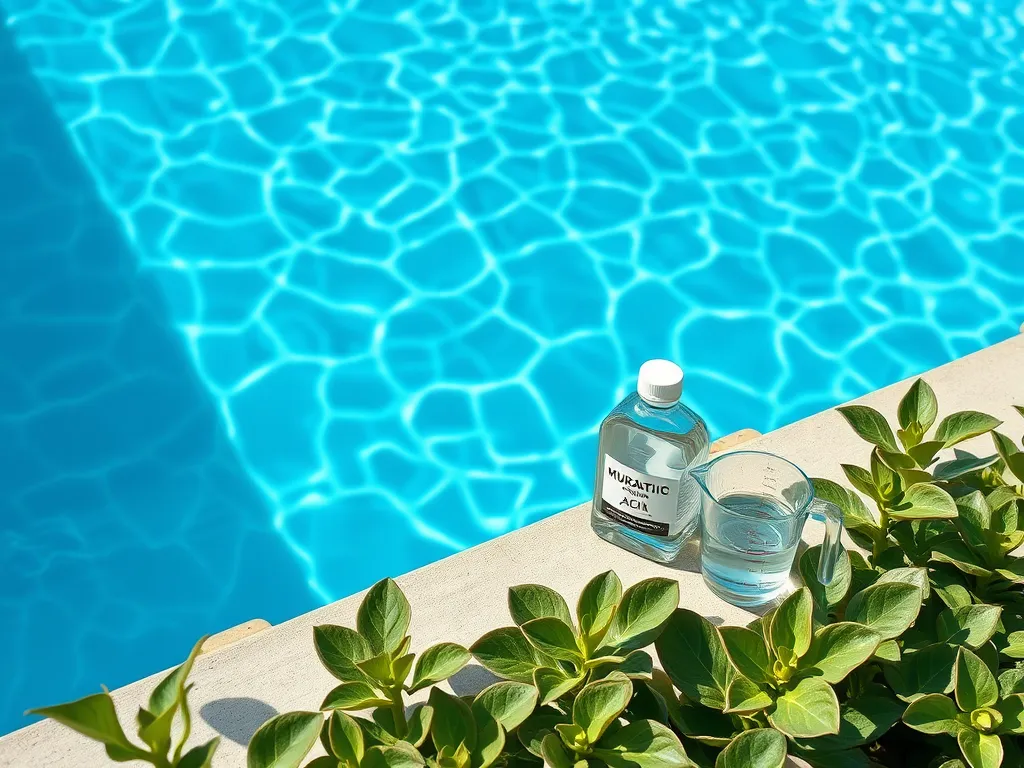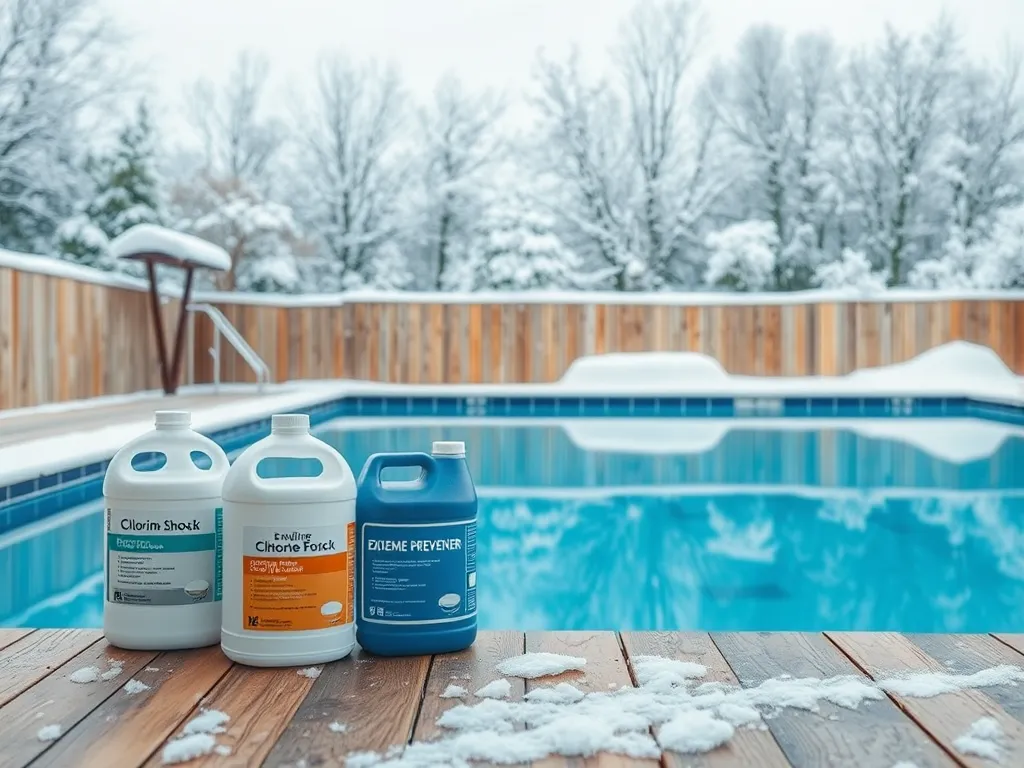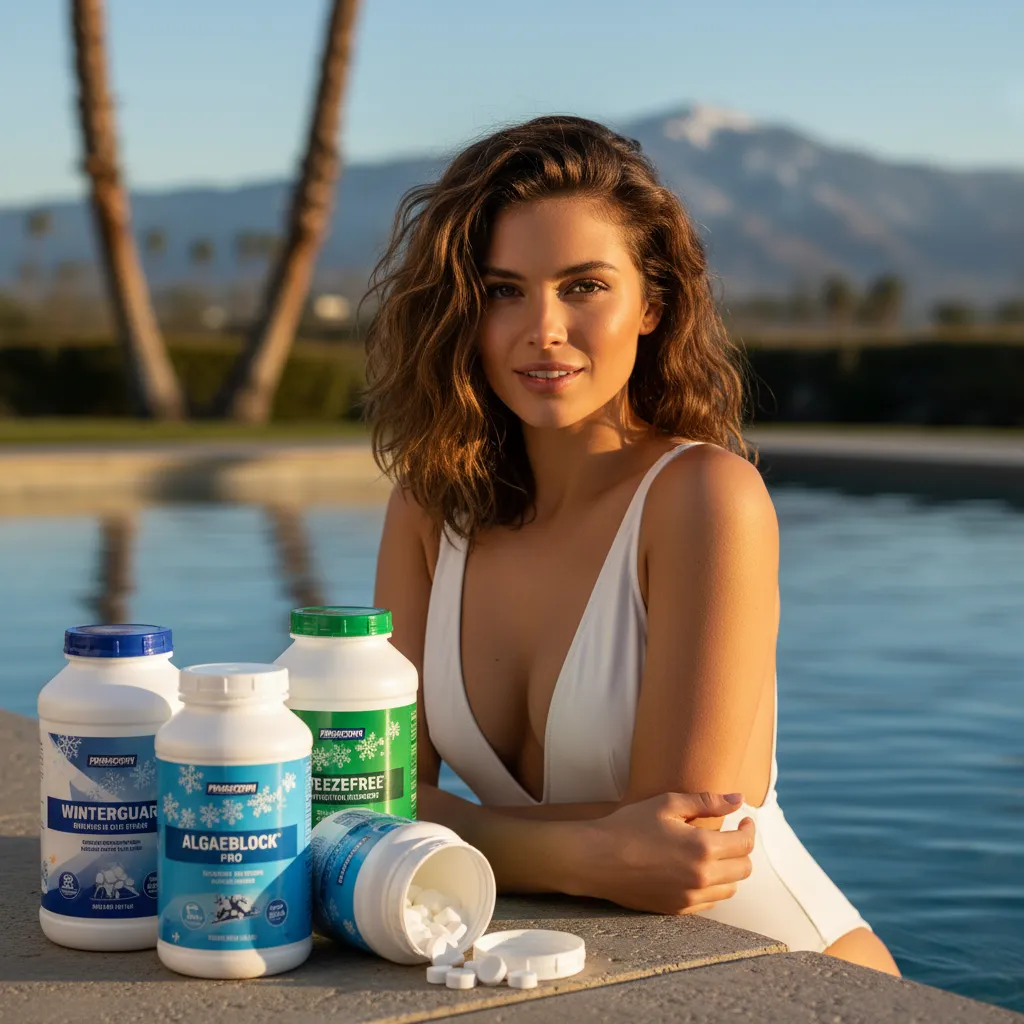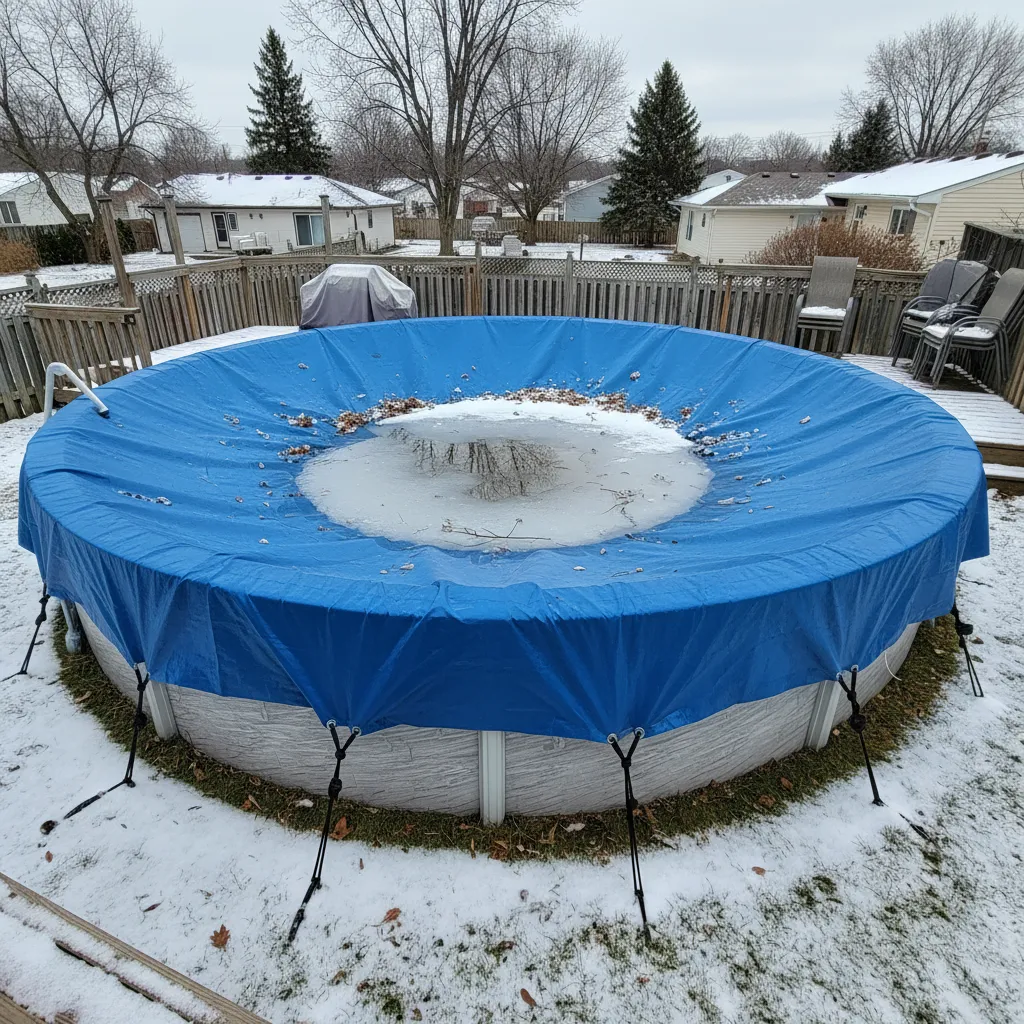Winter Pool Chemical Calculator: Keep Your Pool Balanced Off-season
Published on: April 20, 2025 | Last Updated: April 13, 2025
Written By: Rachael Weatherbottom
Winter pool care needs precise chemical balancing. Freezing temperatures and reduced filtration require different treatment than summer. Use this calculator to find how much muriatic acid, baking soda, or chlorine you need to winterize your pool safely. No complex math required – just enter your pool details below!
Pool Winterization Calculator
- Test pool water with kit/strips
- Enter current measurements above
- Add chemicals gradually in 2-3 stages
Factors Affecting Winter Pool Chemical Dosage
Properly winterizing a pool requires precise chemical adjustments. Several variables influence the exact quantities needed. Ignoring these factors risks algae growth, staining, or equipment damage during colder months. Once spring arrives, it's time to assess the pool's condition. Cleaning the pool after winter ensures it's safe and ready for swimming.
Crucial Winterizing Products
"The all-in-one solution for a guaranteed clear spring opening."
All-in-One Closing Chemical Kit
Winter demand is high - check stock
"The 'set & forget' option. This is the easiest winterizing I've ever done."
Simple 3-in-1 Winterizing Balls
Winter demand is high - check stock
"Invest once to protect your liner and prevent a swamp in the spring."
Heavy-Duty Winter Pool Cover
Winter demand is high - check stock
Pool Volume and Surface Area
Gallons of water determine chemical demand. A 15,000-gallon pool needs 50% more chlorine than a 10,000-gallon pool. Surface area impacts evaporation rates and debris accumulation. Rectangular pools use the formula: Length × Width × Average Depth × 7.5. Freeform designs may require professional measurement. To maintain the right chemical balance, it's essential to know the pool's total volume. Calculating pool gallons helps in managing water treatment effectively.
Initial Water Chemistry
Test these parameters 48 hours before closing:
- pH: Ideal range 7.2–7.6. High pH reduces chlorine efficacy.
- Total Alkalinity: 80–120 ppm stabilizes pH swings.
- Calcium Hardness: 200–400 ppm prevents plaster erosion or scaling.
- Free Chlorine: Start with 1–3 ppm before shocking.
Regional Climate Conditions
Freeze-thaw cycles in Zone 6 (e.g., Pennsylvania) require higher algaecide doses than Zone 9 (e.g., Florida). Pools in leaf-heavy areas need 30% more oxidizers. Desert climates with high evaporation may demand calcium increaser.
Pool Type and Material
Vinyl liners tolerate lower calcium (150 ppm) than concrete. Saltwater pools need non-chlorine oxidizers like potassium peroxymonosulfate. Fiberglass surfaces require enzymes to prevent biofilm.
Winter Chemical Formulas and Dosage Guidelines
Standard chemical ratios prevent guesswork. Always follow label instructions—these are generalized formulas for typical residential pools.
Chlorine Shock Treatment
Use calcium hypochlorite (65–73% strength) or dichlor (55–62%):
| Pool Volume | Cal-Hypo | Dichlor |
|---|---|---|
| 10,000 gal | 1.5 lbs | 2.0 lbs |
| 20,000 gal | 3.0 lbs | 4.0 lbs |
| 30,000 gal | 4.5 lbs | 6.0 lbs |
Apply shock at dusk for optimal overnight circulation. Wait 8–12 hours before adding algaecide.
Algaecide Selection and Application
Polyquat 60 (quaternary ammonium) is preferred for winter:
- Clear pools: 12 oz per 10,000 gallons
- History of algae: 18 oz per 10,000 gallons
Avoid copper-based algaecides in plaster pools—they may stain surfaces.
Ph Adjusters and Stabilizers
Muriatic acid (31.45% HCl) lowers pH: 1 quart reduces 10,000 gallons by 0.4. Sodium bicarbonate raises alkalinity: 1.5 lbs increases 10 ppm in 10,000 gallons. Cyanuric acid should be 30–50 ppm; excess reduces chlorine efficiency. Proper pH balance is crucial for effective pool maintenance. Using muriatic acid can help achieve the right pH levels in water.
Also See: Pool Gallon Calculator: Calculate Pool Capacity Easily

Regional Adjustments for Winterization
Chemical needs vary by USDA Hardiness Zone. Modify base formulas as follows:
Northern Climates (Zones 3–5)
- Double algaecide dosage if water temperature drops below 40°F
- Add 2 lbs of sodium bromide per 20,000 gallons as secondary sanitizer
Southern Climates (Zones 6–9)
- Maintain 3 ppm chlorine if temperatures exceed 50°F
- Use 8 oz of enzyme clarifier per 15,000 gallons to break down organic debris
Special Cases in Winter Chemical Treatment
Saltwater Pools
Shut off salt chlorinators after shocking. Add 2 lbs of dichlor per 10,000 gallons to maintain 5 ppm chlorine. Test salinity—ideal range 2,700–3,400 ppm. High salinity accelerates corrosion. It's also important to consider the chlorine levels for safe swimming. Neutralizing chlorine in your pool can help balance the water chemistry and make it more comfortable for swimmers.
Pools With Automatic Covers
Reduce algaecide by 25% but increase chlorine to 5 ppm. Check cover seals; trapped moisture breeds bacteria. Apply silicone lubricant to cover mechanisms.
Pools Near Evergreen Trees
Add 50% more oxidizer. Use phosphate remover if levels exceed 500 ppb. Brush walls weekly until water reaches 60°F.
Winter Chemical Costs and Budgeting
Average costs for a 20,000-gallon pool:
- Chlorine shock: $15–$25
- Polyquat 60: $35–$55
- Stain preventer: $20–$40
- Enzyme treatment: $18–$30
Buy in 5-gallon bulk containers for 20% savings. Check expiration dates—oxidizers lose potency after 12 months.

FAQs: Winter Pool Chemical Management
Why Use Extra Chlorine Before Closing?
Chlorine decays 30–50% faster in cold water. Initial 5 ppm ensures residual sanitizer through spring.
Can I Close My Pool With High Calcium?
Levels above 400 ppm require dilution. Drain 6–8 inches of water, refill, and retest. Use scale inhibitor if unable to drain.
Is Algaecide Safe for Pool Covers?
Polyquat won’t degrade vinyl. Rinse covers with 10:1 water/white vinegar solution before storage.
Advanced Winterization Techniques
Enzyme-based Treatments
Lipase/protease blends digest oils and leaves. Apply 16 oz per 15,000 gallons monthly. Reduces spring cleanup time by 70%.
Ozone Systems in Winter
Maintain 0.3 ppm residual ozone with 2-hour daily cycles. Compatible with chlorine—avoid bromine combinations.
Metallic Ion Sanitizers
Silver nitrate (0.05 ppm) or copper ions (0.3 ppm) provide backup sanitation. Test monthly to prevent metal staining.
Post-winter Chemical Balancing
Upon reopening, expect these shifts:
- pH rise of 0.8–1.2 from carbon dioxide off-gassing
- Chlorine depletion to 0.5 ppm or less
- Alkalinity drop of 20–40 ppm
Adjust TA before pH. Shock if combined chlorine exceeds 0.5 ppm.
For precise chemical adjustments tailored to your pool’s specifics, explore the tools at My Pool Calculator. Input your pool’s dimensions, material, and regional data for customized winterization steps.
Additional Resources for You:
- Tamminen, T. (2019). The Complete Pool Manual for Homeowners: A Step-by-Step Maintenance Guide. New York, NY: Skyhorse Publishing.
- Pool Volume Calculator - Free Suite of Pool Chemical Calculators
- The Pool Calculator
- Pool Calculator - Swimming Pool Maintenance Tools and Chemicals
- Calculators | AquaChek Pool & Spa Testing
A pool care geek who’s been testing water chemistry since she was tall enough to reach the skimmer.
Chemical Dosage, Pool Calculators





